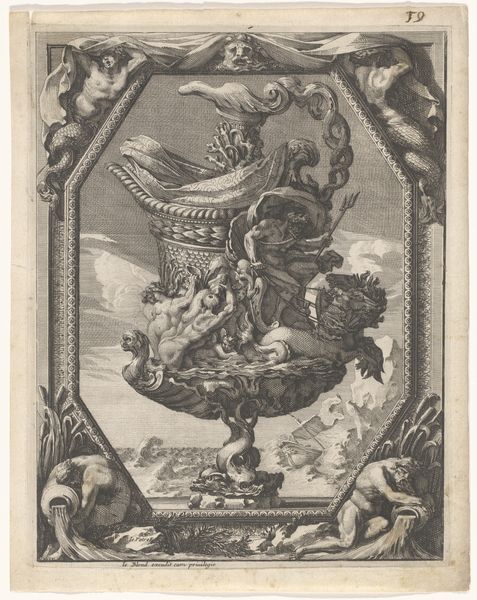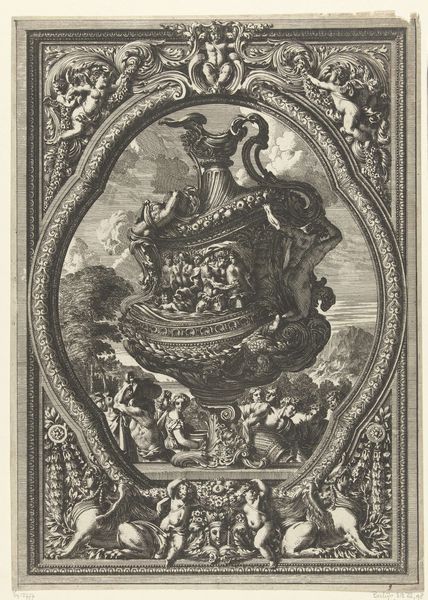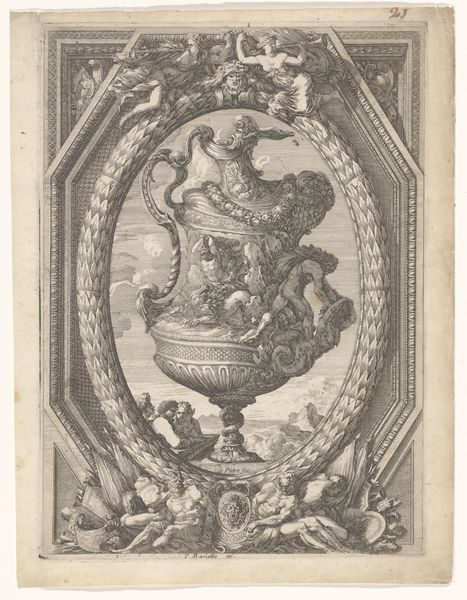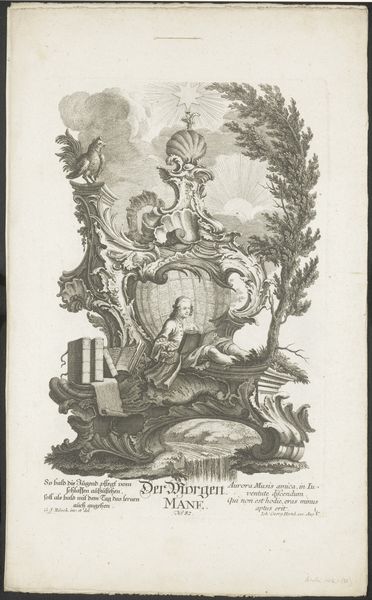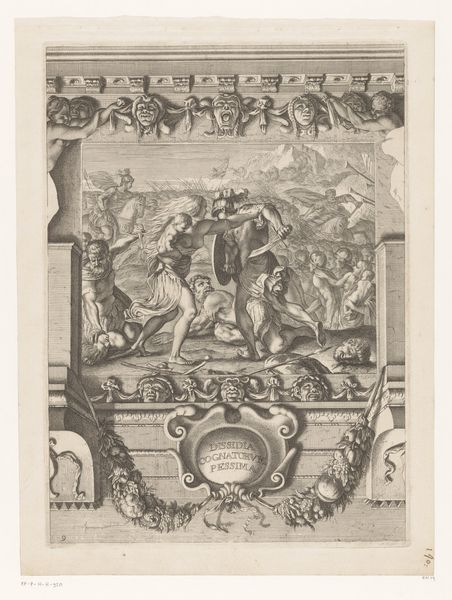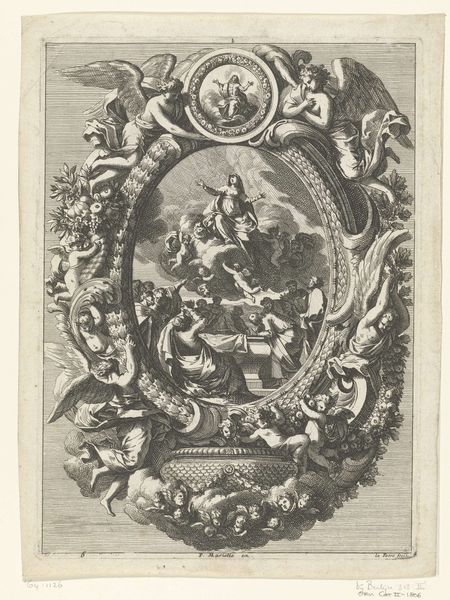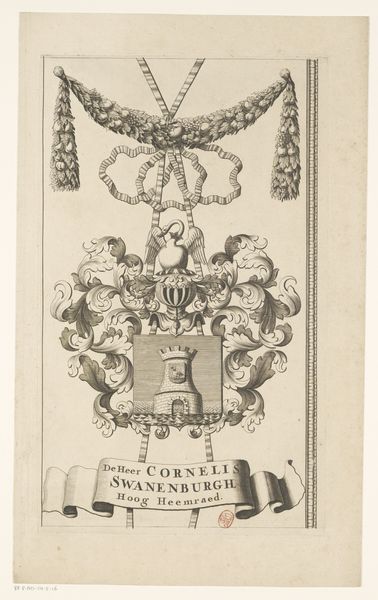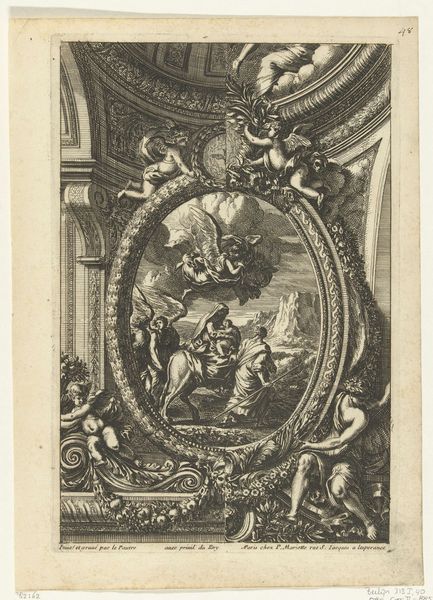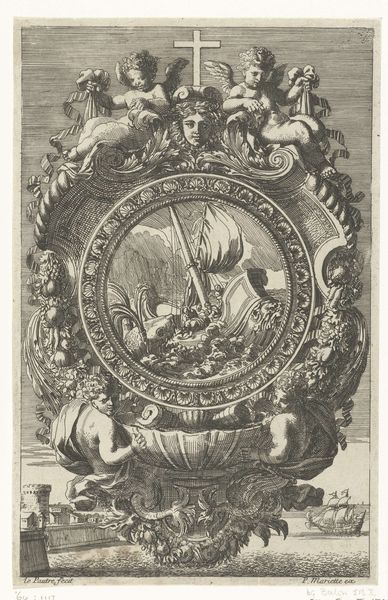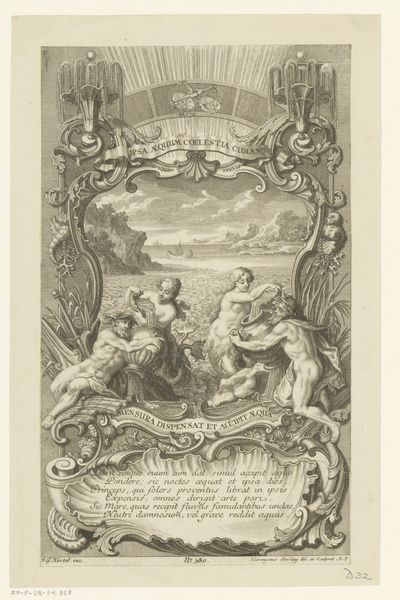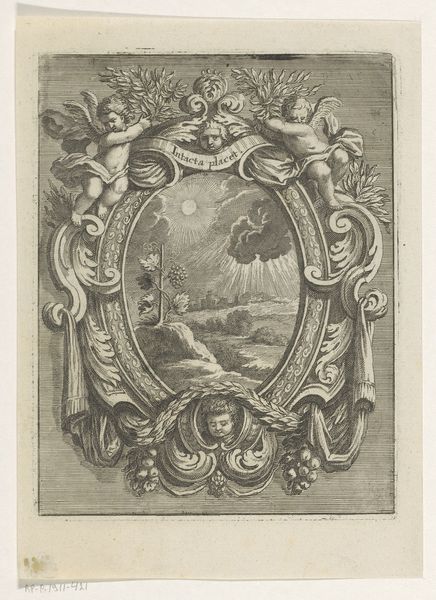
print, sculpture, engraving
#
baroque
# print
#
sculpture
#
landscape
#
form
#
charcoal art
#
sculpture
#
line
#
engraving
Dimensions: height 280 mm, width 221 mm
Copyright: Rijks Museum: Open Domain
Editor: Here we have Jean Lepautre’s etching "Schenkkan met sfinxen," made around 1650 to 1664. It depicts an elaborate, sculptural vase adorned with sphinxes, all framed by ornate detailing. The vase feels incredibly opulent, almost decadent. How do you interpret this work? Curator: It's more than mere opulence; it's a reflection of power and the gaze through which that power is maintained. Lepautre’s work sits squarely within a Baroque aesthetic that celebrated hierarchy and divine right, and it invites us to question that framing. Notice the way the sphinxes are positioned, their traditional role as guardians now repurposed as decorative elements on an object likely meant for the entertainment of the wealthy elite. Who are they guarding now, and from whom? Editor: That’s a really interesting point. I hadn't considered the implications of subjugating such a symbolic creature. Do you think Lepautre was intentionally critiquing the social structure? Curator: Perhaps not explicitly. But as a product of his time, Lepautre was undoubtedly influenced by the prevailing ideologies, and the very act of depicting these power dynamics allows for analysis. Think about the broader historical context: this was a period of intense social stratification, religious conflict, and colonial expansion. Art, even decorative art, served as a marker of status and control. How does the vase, with its classical references and overt display of wealth, participate in those conversations? Editor: I see what you mean. It’s not just about aesthetics; it's about understanding the values and power structures of the society that produced it. Thinking about it that way, the piece speaks volumes about inequality. Curator: Precisely! And that’s how we can engage with historical artworks in relevant and critical ways today, to examine the ideologies shaping art creation. Editor: This gives me so much to think about! I had never looked at Baroque art through this intersectional lens. Thanks!
Comments
No comments
Be the first to comment and join the conversation on the ultimate creative platform.
